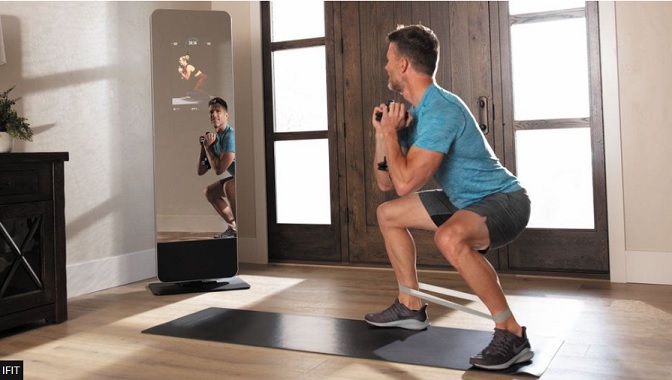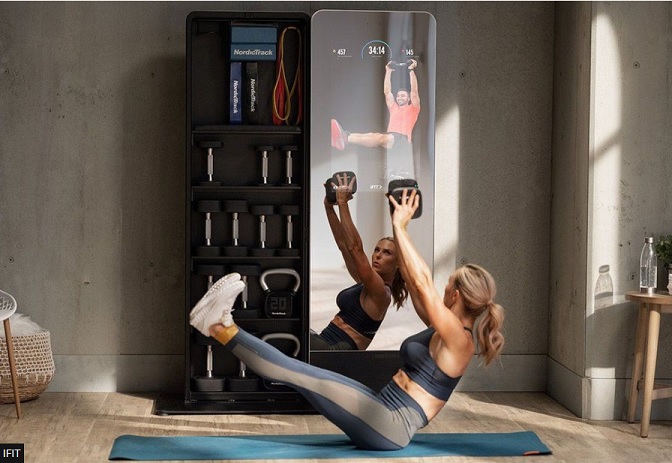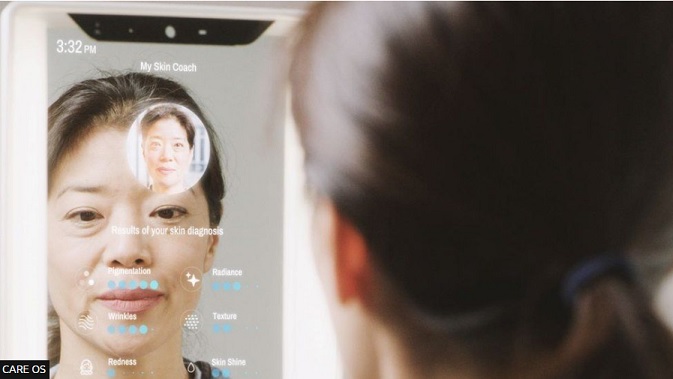
For most people, including fitness fans, the thought of having to watch yourself work out is not an appealing one.
We don't look our best while sweating on a treadmill or grimacing on a weights machine.
Yet as any gym-goer knows, there are always some individuals who like to admire their reflection in the floor-length mirrors.
It is perhaps these particular keep-fit enthusiasts who are most thrilled about the latest trend in home exercise - smart fitness mirrors.
These are 6ft (180cm) or so tall, vertical, high-tech mirrors that contain a computer, hook up to the internet, and also work as a video screen.
The idea is you connect with an online trainer, who then appears on the mirror/screen along with your reflection.
On the more advanced devices the mirror is fitted with cameras and speakers, so the trainer can observe your movements, and suggest tweaks and changes.
Users have the option of live one-to-one lessons or group classes, with a number of workouts, including weights, Pilates, cardio, and yoga.
On the simpler mirrors the video and sound is just one-way - you can see and hear the trainer, but not the other way around. Lessons are typically not live, instead you access a library of streamed workout videos.

Whether you go for a higher-spec model, or more basic offering, you typically pay at least £1,000 ($1,300) for the mirror, and then a monthly subscription on top.
The touch-screen mirrors are also typically fitted with numerous sensors, connected to an artificial intelligence (AI), which can give feedback on your movements, and suggest improvements.
The first such mirror to go on sale in the UK was the Vaha. Made by the German firm of the same name, it hit the market last year. Rival brands include Tonal, Mirror, NordicTrack, Portl, and ProForm.
Vaha describes its mirror as "delivering full personalised, immersive sessions for body, mind and nutritional health".
But is there any actual advantage to being able to watch yourself workout?

Colleen Logan, vice president of public relations at iFit, the US-owner of both Nordic Track and ProForm, says that seeing yourself on the mirror allows the user "to adjust their form [or position], so they get the optimum benefits of the strength exercise and minimize errors in form that could lead to injuries".
Dr Anthony Papathomas, a sports and fitness psychologist at Loughborough University says that there is merit to this argument, but that he also has some concerns.
"From a psychological perspective, exercising in front of your reflection might provide important feedback; for example on running technique or weight lifting form," he says. "It may also appeal to people's aesthetic motivations for exercise - you can see the muscles in action and that can feel rewarding."
Mr Papathomas adds: "My concern would be how do people with body image insecurities feel about this? It may be a problem for those new to exercise and looking to make a lifestyle change.
"Even for regular exercisers, we know there are many who experience body dysmorphia or eating disorders, and for them, seeing a reflection throughout their exercise might be troubling."
A similar form of high-tech mirror is also now entering the market - smart wellness mirrors. These are mirrors that use sensors and AI to evaluate a user's skin and underlying health.

